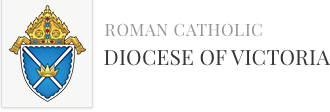From the very beginning, trees have been central to God’s story. In the Garden of Eden, the Tree of Life offered eternal hope, while the Tree of the Knowledge of Good and Evil reminded humanity of its need for God’s guidance (Genesis 2–3). Trees are living signs of God’s presence, teaching us about growth, rootedness, resilience, and the cycles of life. Standing beneath their branches, we often experience a sense of awe—as if walking in a cathedral of creation, where every leaf, branch, and trunk reflects the Creator’s hand.
Trees and Creation Today
Here on Vancouver Island, trees and forests are equally central to our lives. They clean the air, provide habitat, and hold the soil. Yet many of our ecosystems are under threat from invasive species, urban growth, and climate change. One powerful example is the Garry Oak ecosystem, once widespread across southern Vancouver Island but now one of Canada’s many endangered environments.
Restoring these meadows requires patient, hands-on work: removing invasive plants, replanting native wildflowers and grasses, and caring for young Garry Oaks until they are strong enough to thrive. Parish and community groups who volunteer in this restoration are, in a very real way, living the biblical call to “till and keep” the garden (Gen 2:15).
Learning from Indigenous Stewardship
This call is not new. Indigenous peoples have lived in relationship with these lands and forests since time immemorial. Coast Salish, Nuu-chah-nulth, and Kwakwaka’wakw communities, among others, cultivated ecosystems through practices such as controlled burning, selective harvesting, and seed planting—ensuring abundance for future generations. Their stewardship recognizes that humans are not owners of the land but part of it: connected, dependent, and responsible.
Pope Francis echoes this in Laudato Si’, reminding us that ecological destruction is not only an environmental crisis but a human one, often felt acutely by Indigenous peoples around the world, as well as marginalized communities. By listening to the wisdom of local Indigenous communities and working together for restoration, we begin to walk a path of healing, reconciliation, and hope.
Rooted in Faith, Reaching for the Future
Imagine if every parish and school in our Diocese committed to planting trees, restoring native habitats, or supporting ecological stewardship. These actions, however small, would ripple outward—renewing creation and pointing us toward the Tree of Life in Revelation, whose leaves are “for the healing of the nations” (Rev 22:2).
This Season of Creation, let us walk gently, care deeply, and marvel at the beauty that surrounds us. May we come to see our forests as the great cathedral of creation—living sanctuaries where God’s presence dwells, and where our care today ensures that generations to come may still stand in awe beneath their branches.

.png)

%20(Twitter%20Post).png)